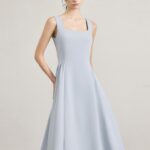A Journey Through Time: Hanfu, Hanbok, and Kimono
The traditional attires of East Asia, namely Hanfu, Hanbok, and Kimono, are not merely garments; they are a tapestry of history, culture, and artistry. Each style is a testament to the region’s rich heritage and a reflection of its people’s identity. As we delve into the intricacies of these traditional costumes, we embark on a journey that transcends time and space, connecting us with the past while resonating in the present.
The Elegance of Hanfu: A Chinese Legacy
The Hanfu, with its flowing sleeves and intricate patterns, is a symbol of ancient China’s sophistication. Originating from the Han dynasty, it has evolved through various dynasties, each leaving its mark on the design. The traditional Chinese Clothing is characterized by its deep cultural significance, where each color and pattern holds a specific meaning. As stated by a renowned historian, “The Hanfu is a living artifact that narrates the story of China’s past,” highlighting its importance in understanding the cultural evolution of the region.
The Resilience of Hanbok: A Korean Emblem
The Hanbok, with its vibrant colors and structured design, represents the resilience and elegance of the Korean people. It is a traditional outfit that has been adapted and preserved through the ages, reflecting the nation’s ability to maintain its cultural identity amidst historical challenges. The Hanbok is more than a garment; it is a symbol of Korea’s past and present, as emphasized by a popular Korean designer who once remarked, “The Hanbok is the heartbeat of our culture, pulsating with life and tradition.”
The Serenity of Kimono: A Japanese Aesthetic
The Kimono, with its graceful lines and fluid movement, embodies the Japanese philosophy of simplicity and harmony. It is a traditional Japanese garment that has been worn for centuries, evolving with the changing times while maintaining its distinctive elegance. The Kimono is not just a piece of Clothing; it is a canvas that showcases the beauty of Japanese aesthetics, as described by a well-known Japanese fashion expert: “The Kimono is a reflection of our soul, a serene expression of our inner peace.”
Cultural Exchange and Influence
The Hanfu, Hanbok, and Kimono have not only shaped their respective cultures but have also influenced each other through the centuries. Trade, diplomacy, and cultural exchanges have facilitated the sharing of ideas and designs, enriching the tapestry of East Asian fashion. This cross-cultural pollination is evident in the similarities and differences among these traditional attires, as noted by a cultural anthropologist: “The interplay of Hanfu, Hanbok, and Kimono is a testament to the fluidity of culture and the beauty of diversity.”
Reviving Traditions in the Modern World
In today’s fast-paced world, there is a resurgence of interest in traditional Clothing. Young people across East Asia are embracing their cultural roots by wearing Hanfu, Hanbok, and Kimono, not just for special occasions but as a part of their everyday attire. This revival is not merely a fashion trend; it is a celebration of heritage and a statement of cultural pride. As a social media influencer aptly put it, “Wearing Hanfu, Hanbok, or Kimono is more than just dressing up; it’s about honoring our roots and expressing our cultural identity.”
Conclusion: The Timeless Appeal of Traditional Attire
The exploration of Hanfu, Hanbok, and Kimono reveals the enduring charm and significance of traditional attire. These garments are not just pieces of fabric; they are threads that weave the rich tapestry of East Asian culture. As we continue to appreciate and preserve these cultural treasures, we ensure that the stories they tell are passed down to future generations, keeping the spirit of these timeless attires alive.







I’m a Korean expatriate living in the United States, and I miss the elegance of Hanbok. Wearing Hanbok during Korean festivals in the US is a way to stay connected to my roots and share my culture with others.